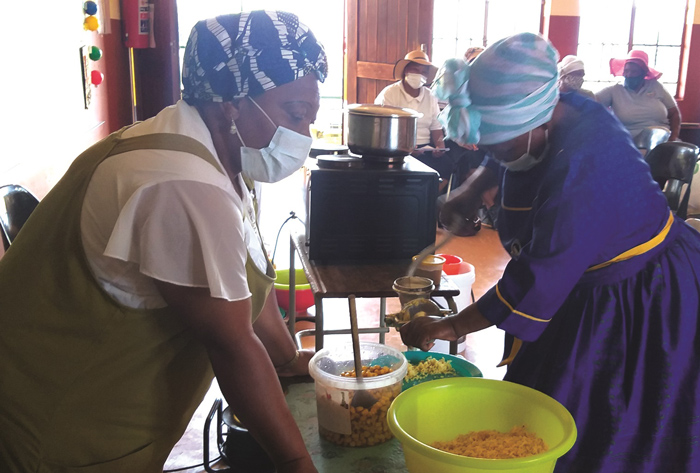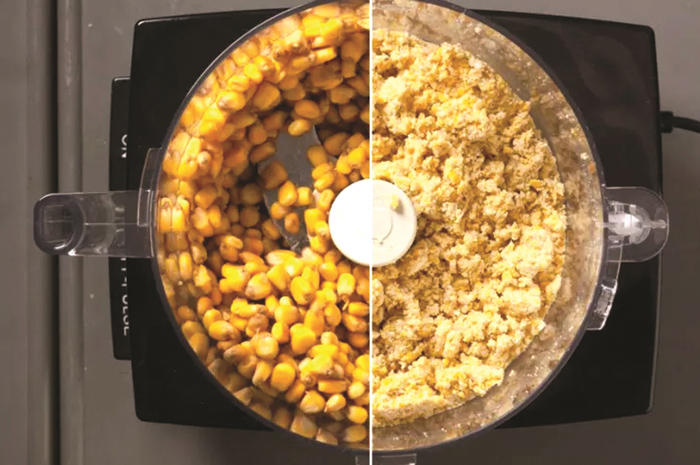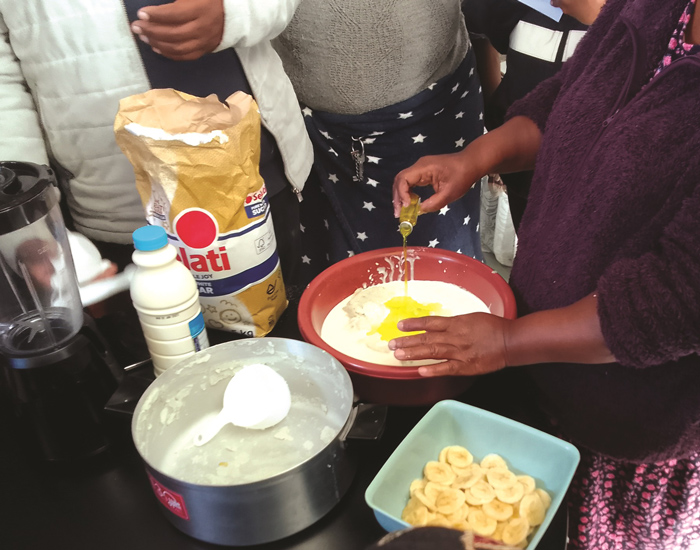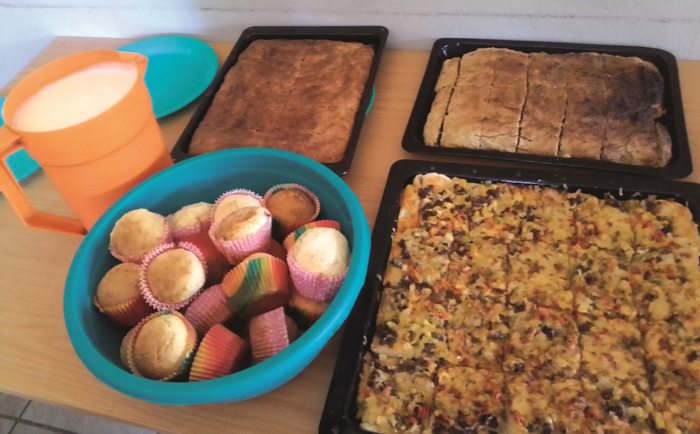September 2023
| JENNY MATHEWS, MANAGEMENT AND DEVELOPMENT SPECIALIST AND EDUCATOR |
 |
Nixtamalisation is a special way of preparing maize and other grains like sorghum, to enhance its nutritional value and make it more versatile for cooking and baking.
This process produces nixtamal – a more nutritious, flavourful and easily processed product which is then milled to make dough or flour for various maize-based food products.
THE PROCESS
The maize is soaked, washed and hulled – the outer covering of the maize is softened and washed off. This process is believed to remove up to 90% to 97% of the aflatoxins from the maize. Once washed, the grain is called nixtamal. This is ground, minced and processed with water to form a maize dough called masa with which various products can be made (see Figure 1). The mixture can also be dried and later pounded into flour to be used in breads and baking.

The process of nixtamalisation.
Source: https://latortilleria.com.au/
BENEFITS
The nixtamalisation of maize is agro-processing that provides several benefits over unprocessed maize:
THE DANGER OF MYCOTOXINS
Mycotoxins are naturally occurring toxins produced by moulds (fungi) and can be found in many foodstuffs, including maize. Maize can become contaminated in the field and during storage. Exposure to mycotoxins occur by directly eating infected food, and it can lead to various diseases in humans and animals.
Since maize is a staple food in South Africa, it is of particular interest to learn more about a process that can eliminate the problem – nixtamalisation.
YOU CAN DO IT TOO
LET’S START AT THE BEGINNING
Grain SA Farmer Development has always looked for ways to encourage farmers to add value to their grain, both for household use and for the marketplace. For some years now, the Grain SA team has been exploring and educating maize farmers about the possibilities offered through a process called nixtamalisation.
The earliest experiments done by the Grain SA team were a steep learning curve – holding workshops with several well-known cooks and caterers from Grain SA study groups. The team noted that this initiative was causing great excitement among the farmers and rural women, who had their eyes opened to amazing new possibilities offered to them by processing the maize kernels to produce masa, the versatile dough produced through nixtamalisation.
PARTNERSHIPS IMPROVE POSSIBILITIES
It soon became clear that this was an avenue worth exploring. The team immediately started looking for partners to assist them in transferring this exciting knowledge. The Department of Science and Technology, which has been supported further by the now Department of Science and Innovation (DSI), showed a lot of enthusiasm. The first courses that were developed, were rolled out with support from the DSI early in 2018.
With the understanding that this was an important innovation in the agricultural bio-economy, Grain SA’s Research and Farmer Development departments jointly further collaborated with Dr JW Swanepoel and Dr Alba du Toit of the Centre for Sustainable Agriculture, Rural Development and Extension at the University of the Free State (UFS) to further investigate the agro-processing opportunities that the nixtamalisation process has to offer.
To date, the Grain SA/DSI collaboration has enabled the rollout of almost 500 training courses, teaching approximately 6 000 course attendees the theory and practice of nixtamalising maize and using it for human consumption. More research is also underway at the UFS to refine recipes, create marketable products and further investigate shelf life, packaging and possible business models to pilot various types of businesses in collaboration with rural women.
SUMMARY OF PROJECT TO DATE
To date, through the project, the following deliverables were achieved:
Baseline study: Baseline information on processing methods, current knowledge and skillset within communities was collected
and analysed.
Research and development: The following has been completed:
Capacity development: Beneficiaries were trained in the processing methods that were developed.
Intended provinces where training sessions will be presented, are Mpumalanga, Limpopo, the Free State and North West.
Please note: Work responsibly with slaked lime. Make sure there is good ventilation so that the fumes are not inhaled. Do not place your hands directly in the lime water. Pour the soaked and steeped grain into a colander sieve and rinse well – stir with a wooden spoon or wear gloves when washing the lime off the kernels. Rinse the grains very thoroughly. Unprotected exposure can cause severe skin irritation or lung damage. Slaked lime is caustic and must be used with care.

Grain SA presents many courses to teach farmers and women in rural areas about the process of nixtamalisation.

Maize kernels are transformed into masa.
Source: https://www.americastestkitchen.com/cooksillustrated/science/789-articles/feature/transforming-corn

A variety of products can be made from this dough – steamed bread, fortified porridge, pancakes, snacks and even yoghurt.

Selling baked goods from the versatile dough creates a possibility of earning extra money.
Publication: September 2023
Section: Pula/Imvula